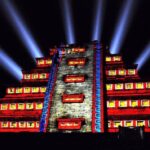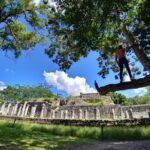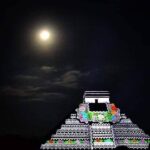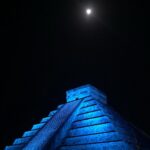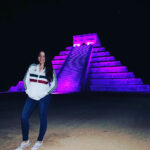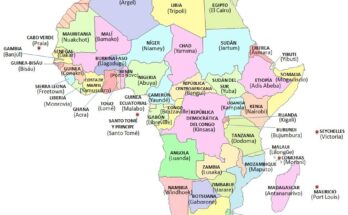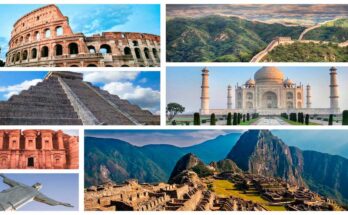Chichen Itza is an impressive archaeological site, which not only has a privileged location very close to the Riviera Maya, more than 50 cenotes and the Yucatan Peninsula, it is also among the top list of the 7 new wonders of the modern world.
In the mornings you can enjoy an incredible tour and learn a little of the history, culture and origin of this archaeological site of Mexico and at night you can enjoy an incredible landscape called “Nights of Kukulkan” where they are combined in a sound and light show.
Ver esta publicación en Instagram
And as always and in a timely manner the Traveling By team will tell you everything you need to know about Chichén Itzá and don’t die trying to get there, so let’s get started.
Table of Contents
Chichen Itzá

Chichen Itza is one of the most important archaeological sites in Mexico and its name means “the city on the edge of the well of the Itzaes” and is located 15 kilometers from the city of Merida, Yucatan and 196.6 kilometers from the city of Cancun, Quintana Roo.
The place as such is not part of the Riviera Maya, but being a very important tourist spot in Mexico and its proximity, it has been “commercialized, popularized and promoted” as another attraction of the Riviera and the Mexican Caribbean.
In addition, the archaeological site of Chichen Itza was declared a World Heritage Site by UNESCO in 1988.
And according to all the studies carried out, this archaeological vertigo consisted of a city2 or ceremonial center, which went through different construction periods and influences of the different peoples who occupied it and who promoted it since its foundation.
An important and renowned vestige of the Maya civilization, the main constructions that remain correspond to the Late Classic or Early Postclassic period (800-1100 A.D.).
It should be noted that as such, the site is still being studied and new discoveries have been made, such as the finding of an enigmatic pyramid hidden inside the temple of Kukulcan by archaeologists from the UNAM, which contains a shrine and rises over a sacred cenote.
Undoubtedly, Chichen Itza is one of the places in Mexico that you must visit on your next vacation.
What is the price of Chichen Itza?
The price of access to Chichen Itza (daytime) is 80.00 MXN or 4 USD, however the Government of the State of Yucatan through the tax administration agency of Yucatan charges a general access of 417.00 MXN (20 USD) for visitors (tourists) and 130.00 MXN (7 USD) for nationals, of course presenting your official identification.
What are the opening hours of Chichen Itza?
The opening hours to visit this enigmatic archaeological site are from Monday to Sunday from 8 am to 5 pm.
Kukulkan Nights
The Kukulkan Nights were born with the purpose of giving one to this incredible archaeological site of Mexico and consists of a night tour that lasts approximately 40 minutes and ends with a mystical light and sound show that projects on the main pyramid the history of Chichen Itza, its legends and a journey through the Mayan cosmogony.
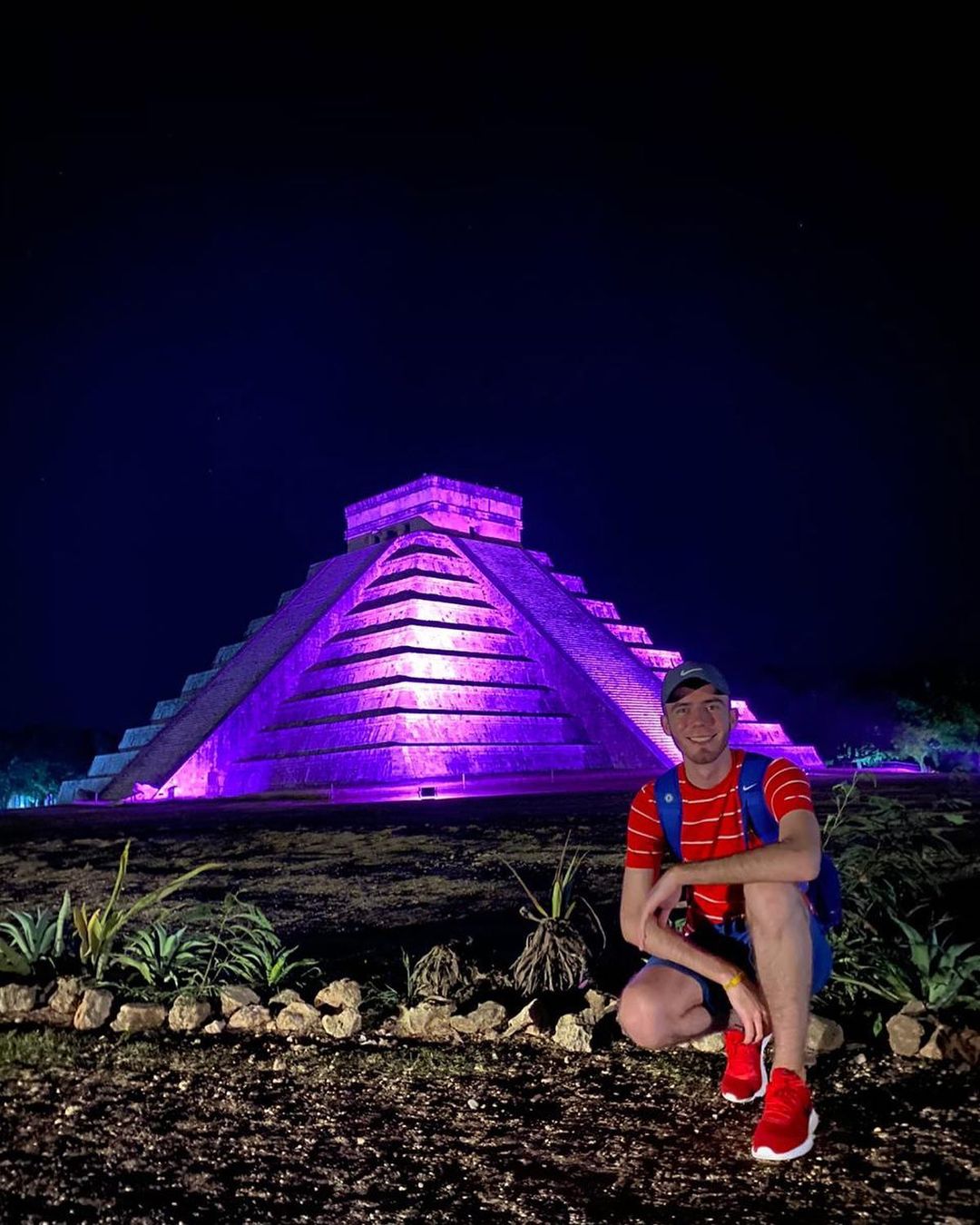
What are the prices for Kukulkan Nights?
The cost of general access to the show “Nights of Kukulkan” has a cost of 600.00 MXN (30 USD) and the schedules are from Tuesday to Saturday from 7:00 pm to 8:30 pm.
Chichen Itza Mayan Ruins
Now we will know all the Mayan ruins that are part of this historic settlement that has captivated locals and strangers, we will know everything we can find here and of course, will leave us eager to know this main attraction of Mexico.
El Castillo Pyramid
Dominating the center of Chichén is the Temple of Kukulkan (the Maya name for Quetzalcoatl), often referred to as “El Castillo” (the castle). This step pyramid has a ground plan of square terraces with stairways up each of the four sides to the temple on top.
On the Spring and Autumn equinox, at the rising and setting of the sun, the corner of the structure
casts a shadow in the shape of a plumed serpent – Kukulcan, or Quetzalcoatl – along the west side of the north staircase. On these two annual occasions, the shadows from the corner tiers slither down the northern side of the pyramid with the sun’s movement to the serpent’s head at the base.
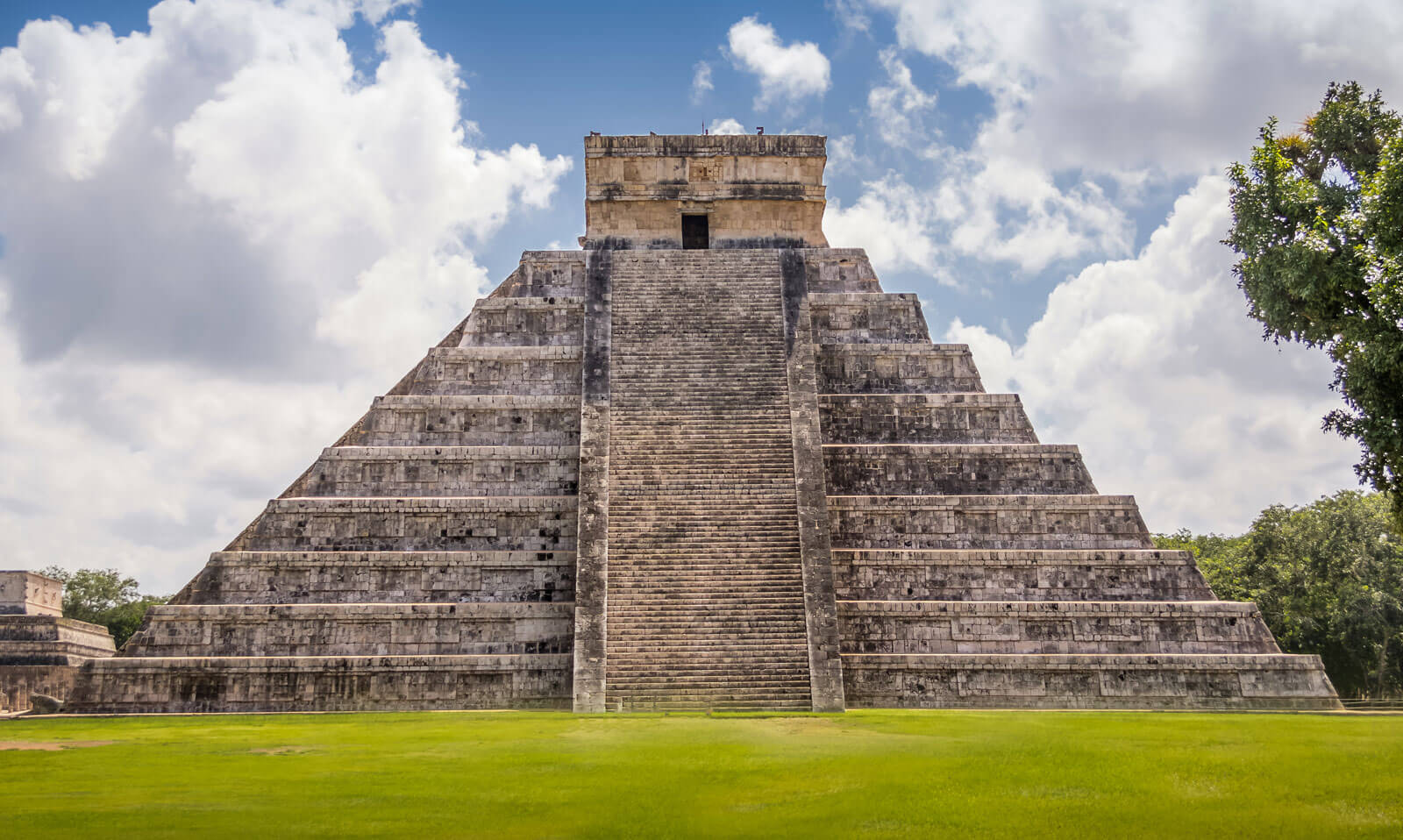
Great Ball Court
Archaeologists have identified several courts for playing the Mesoamerican ballgame in Chichén, but the Great Ball Court about 150 metres (490 ft) to the north-west of the Castillo is by far the most impressive.
It is the largest ball court in ancient Mesoamerica. It measures 166 by 68 metres (545 ft × 223 ft). The imposing walls are 12 metres (39 ft) high, and in the center, high up on each of the long walls, are rings carved with intertwining serpents.

Tzompantli
De todos los monumentos, el Tzompantli es el más parecido a lo que uno encontraría en la Meseta Mexicana. Este monumento, una plataforma baja y plana, está rodeado de representaciones talladas de cráneos humanos.

Platform of the Eagles and the Jaguars
Next to El Castillo are a series of platforms. The Platform of the Eagles and the Jaguars is built in a combination Maya and Toltec styles. Each side has a staircase to the top. Carved into the sides are panels depicting Harpy Eagles and Jaguars consuming what appear to be human hearts.
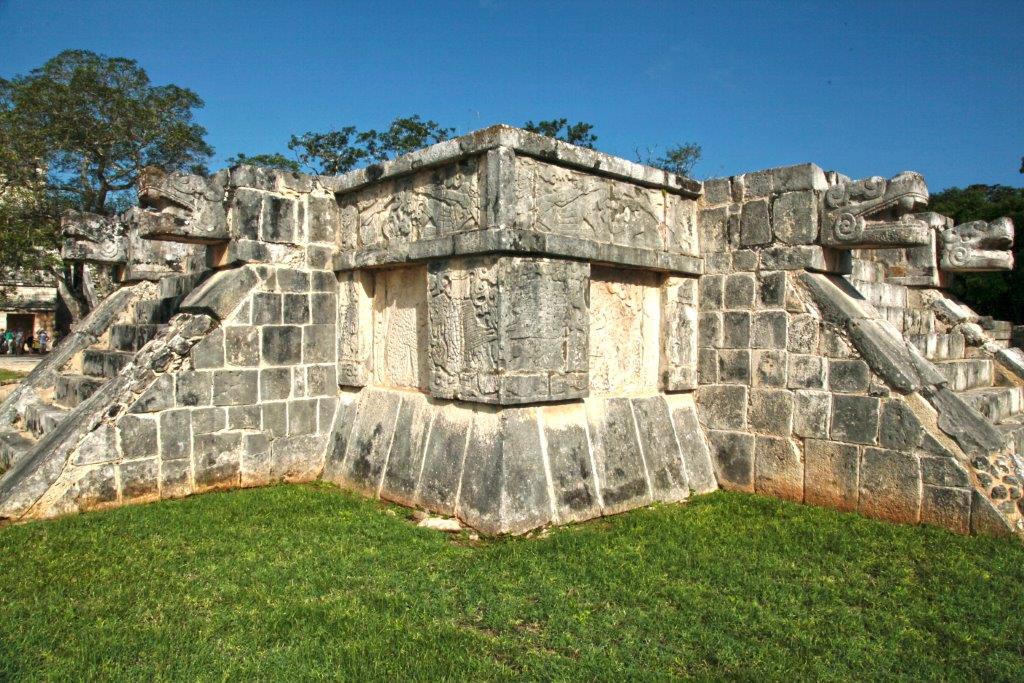
Platform of Venus
This platform is dedicated to the planet Venus. In its interior archaeologists discovered a collection of large cones carved out of stone, the purpose of which is unknown. This platform is placed between El Castillo and the Cenote Sagrado

Cenote Sagrado
The Sacred Cenote (Spanish: cenote sagrado, “sacred well”; alternatively known as the “Well of Sacrifice”) refers to a noted cenote at the pre-Columbian Maya archaeological site of Chichen Itza, in the northern Yucatán Peninsula. It is located to the north of Chichen Itza’s civic precinct, to which it is connected by a 300-metre (980 ft) sacbe, or raised and paved pathway.
According to post-Conquest sources (Maya and Spanish), pre-Columbian Maya sacrificed objects and human beings into the cenote as a form of worship to the Maya rain god Chaac.
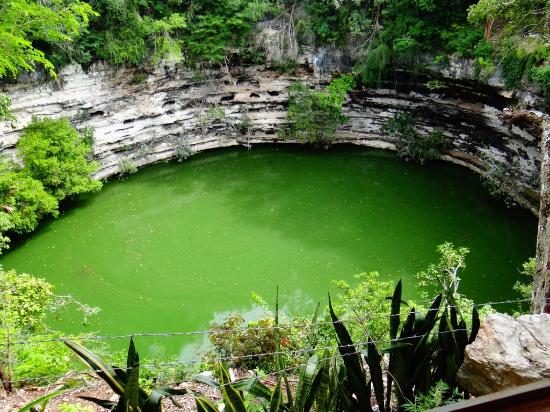
Temple of the Warriors
The Temple of the Warriors complex consists of a large stepped pyramid fronted and flanked by rows of carved columns depicting warriors. This complex is analogous to Temple B at the Toltec capital of Tula, and indicates some form of cultural contact between the two regions.
The one at Chichen Itza, however, was constructed on a larger scale. At the top of the stairway on the pyramid’s summit (and leading towards the entrance of the pyramid’s temple) is a Chac Mool. This temple encases or entombs a former structure called The Temple of the Chac Mool.

Group of a Thousand Columns
Along the south wall of the Temple of Warriors are a series of what are today exposed columns, although when the city was inhabited these would have supported an extensive roof system. The columns are in three distinct sections: an east group, that extends the lines of the front of the Temple of Warriors; a north group, which runs along the south wall of the Temple of Warriors and
contains pillars with carvings of soldiers in bas-relief; and a northeast group, which was apparently formed a small temple at the southeast corner of the Temple of Warriors, which contains a rectangular decorated with carvings of people or gods, as well as animals and serpents.
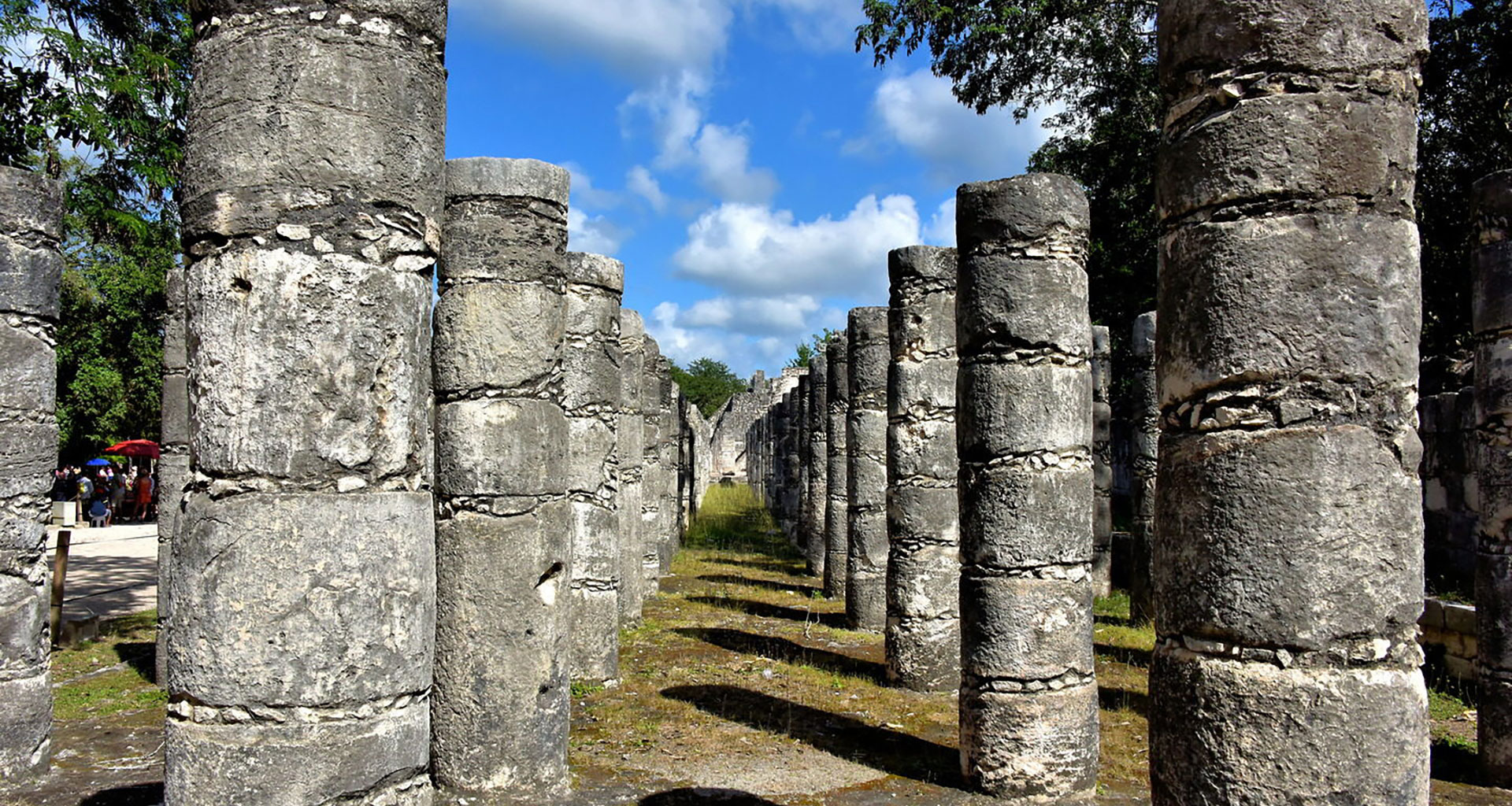
Temple of Xtoloc
Outside the Ossario Platform is this recently restored temple which overlooks the other large cenote at Chichen Itza, named after the Maya word for iguana, “Xtoloc.” The temple contains a series of pilasters carved with images of people, as well as representations of plants, birds and mythological scenes.
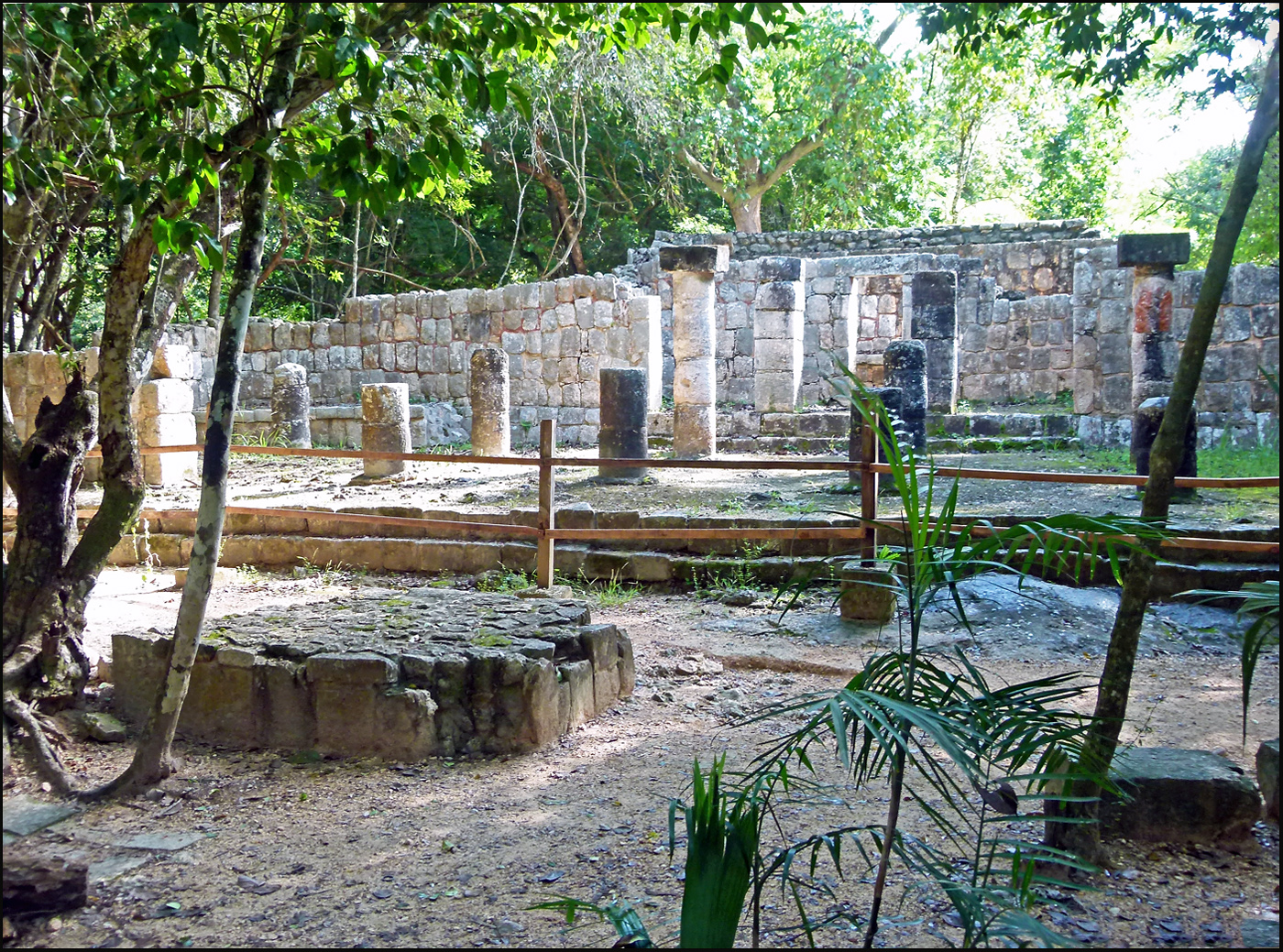
Steam Bath
This unique building has three parts: a waiting gallery, a water bath, and a steam chamber that operated by means of heated stones.
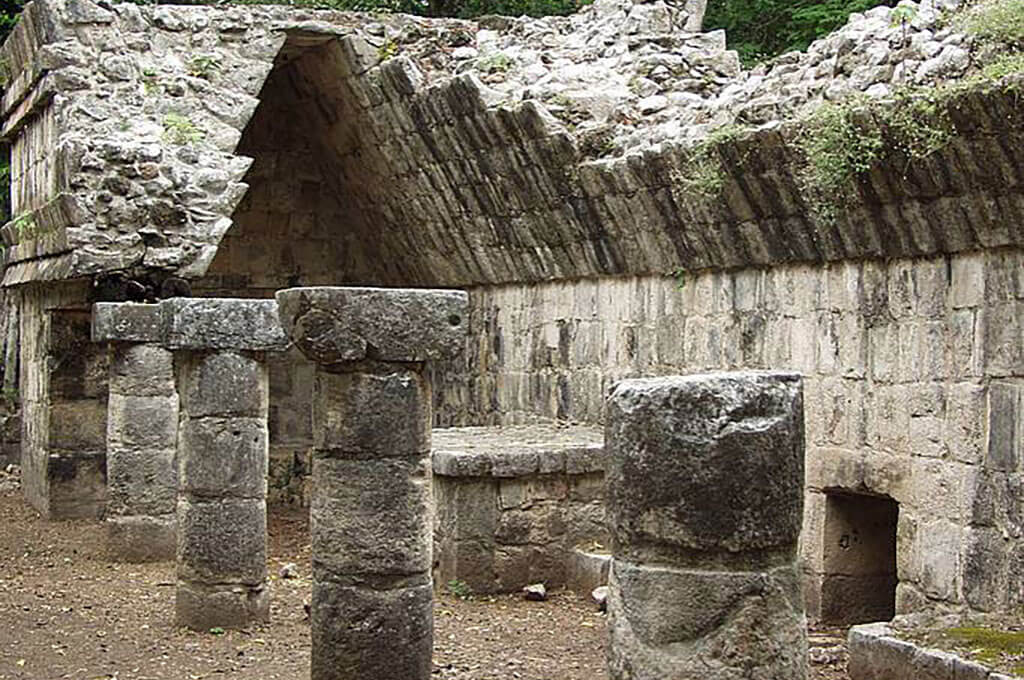
La Iglesia in Las Monjas complex
One of the more notable structures at Chichen Itza is a complex of Terminal Classic buildings constructed in the Puuc architectural style. The Spanish nicknamed this complex.
Las Monjas(“The Nuns” or “The Nunnery”) but was actually a governmental palace. Just to the east is a small temple (nicknamed La Iglesia, “The Church”) decorated with elaborate masks of the rain god Chaac.

El Caracol
El Caracol, also referred to as the Observatory or more formally by its archaeological survey designation Structure 3C15, is the common name given to one prominent building at the pre-Columbian Maya civilization archaeological site of Chichen Itza, on Mexico’s northern Yucatán Peninsula. The structure dates to at least the Mid-Classic period of Mesoamerican chronology, and by the Late Classic or earlier its most probable primary function was as a proto-observatory.

Casa Colorada
The Casa Colorada, which is Spanish for Red House, is one of the best preserved buildings at Chichen Itza. It also has a Maya name, Chichanchob, which according to INAH may mean “small holes.” In one chamber there are extensive carved hieroglyphs that mention rulers of Chichen Itza and possibly of the nearby city of Ek Balam, and contain a Maya date inscribed which correlates to 869 a.d.e., one of the oldest such dates found in all of Chichen Itza.

Ossario
Like El Castillo, this step-pyramid temple dominates the platform, only on a smaller scale. Like its larger neighbor, it has four sides with staircases on each side. There is a temple on top, but unlike El Castillo, at the center is an opening into the pyramid which leads to a natural cave 12 metres (39 ft) below. Edward H. Thompson excavated this cave in the late 1800s, and because he found several skeletons and artifacts such as jade beads, he named the structure The High Priests’ Temple.



